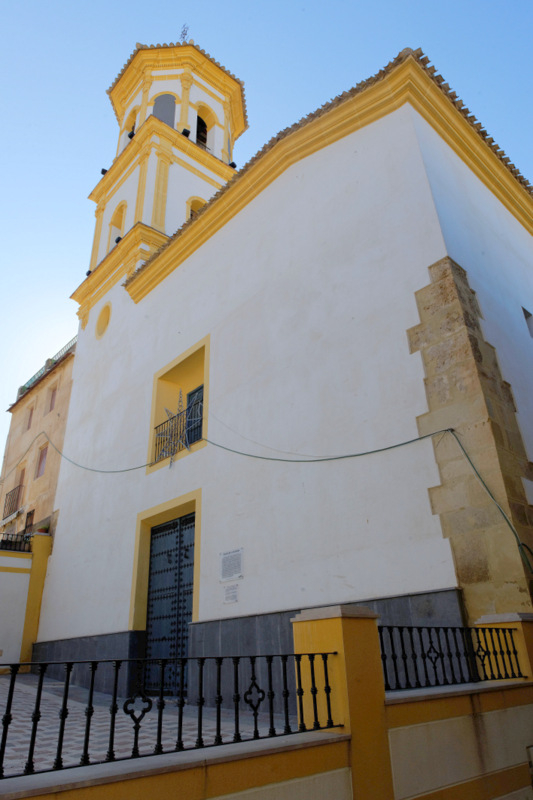Iglesia de la Soledad, Cehegín
The Church of La Soledad, Cehegín
 Iglesia De La Soledad
Iglesia De La Soledad
Cehegín was built as a Moorish town, enclosed within a fortified wall, principally to protect it from attacks by Christian forces involved in the Reconquist of southern Spain during the 12th and 13th centuries. At its highest point was a fortified castle, located in what is now the Plaza de la Constitución, with walls protecting the populated town below it.
The Reconquist of what is now Murcia was achieved in 1243, although it took another 250 years before the process was complete and the moorish Nazris were finally defeated and the population finally felt safe from the threat of attack. At this point the population started to expand outside of the town walls, and Cehegín spread down the hill on which it was located, undergoing a process of expansion.( see History of Cehegín)
The town belonged to the Order of Santiago, which although it supported the construction of new hermitages and churches, frowned on displays on lavish wealth, so the first structures would have been quite modest, fulfilling a religious function.
In the second half of the 16th century, 3 churches were built: la Concepción, in 1556, followed by the Ermita del Milagro and the Ermita de la Soledad.
La Soledad
 This church was built by the Cofradía of the Virgen de los Dolores, at a time when the town was undergoing economic expansion, and many fine houses were being constructed by aristocratic families and wealthy landowners. There were a number of guilds and cofradías in the town, run by the elite, and in this case the construction of this church was paid for by a closed group of the élite bourgeoisie, on lands belonging to the "Chamarreta" family.
This church was built by the Cofradía of the Virgen de los Dolores, at a time when the town was undergoing economic expansion, and many fine houses were being constructed by aristocratic families and wealthy landowners. There were a number of guilds and cofradías in the town, run by the elite, and in this case the construction of this church was paid for by a closed group of the élite bourgeoisie, on lands belonging to the "Chamarreta" family.
This hermitage was built by Ginés de Gea, a local man, who also built the hermitage of Santo Cristo del Milagro, and finished off the works on the Magdalena which had been initiated by Jerónimo Quijano
When it was first built in 1595, the hermitage was a more modest affair, with a single nave, and although the intention would have been to amplify it and make it more decorative, economic difficulties during the 16th century meant that it wasn´t until the second decade of the 17th century that the hermitage was amplified sufficiently to be consecrated as a church.
During this process of amplification, the church grew to incorporate three naves and in 1637 the principal fachada was added by Pedro Jiménez.
In the 18th century more works were undertaken. In 1720 Salvador Martínez added the window and the baroque-style belltower was constructed in 1788
Click Hours of Mass in Cehegin to see mass in all churches.
Where is the Iglesia de la Soledad, Cehegín?
Calle de la Soledad, Cehegín
Click for map, Calle de la Soledad Cehegín.
For more information about Cehegín, go to the dedicated Cehegín section, Click Cehegín.
article_detail




 Iglesia De La Soledad
Iglesia De La Soledad This church was built by the Cofradía of the Virgen de los Dolores, at a time when the town was undergoing economic expansion, and many fine houses were being constructed by aristocratic families and wealthy landowners. There were a number of guilds and cofradías in the town, run by the elite, and in this case the construction of this church was paid for by a closed group of the élite bourgeoisie, on lands belonging to the "Chamarreta" family.
This church was built by the Cofradía of the Virgen de los Dolores, at a time when the town was undergoing economic expansion, and many fine houses were being constructed by aristocratic families and wealthy landowners. There were a number of guilds and cofradías in the town, run by the elite, and in this case the construction of this church was paid for by a closed group of the élite bourgeoisie, on lands belonging to the "Chamarreta" family.

